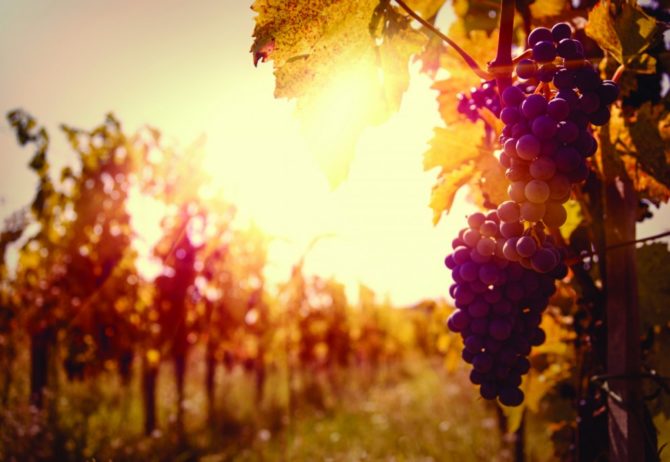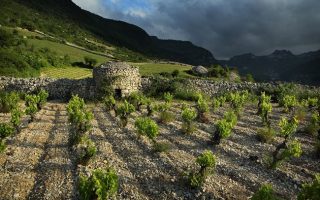How Climate Change is Affecting the Wine Futures System

The hot topic of the international wine trade is whether or not to conduct the 2013 Bordeaux en Primeur campaign. Investment in the fine wine sector has been decreasing steadily and the market is growing tenuous. There is much speculation as to why this is so. Apart from the effects of varying market mechanisms at play, yields are down across France, due to extreme weather events during the growing season, and quality is becoming unreliable. The critics are staying away from the barrel tastings and many châteaux are deciding to not declare this year.
Consequently, everyone is asking whether the campaign should be cancelled. Well, yes and no. If the reason is because they are hesitant to proceed without wine guru Robert Parker’s scores, as they are stating, then that is not a sufficient reason and they should proceed without him. One critic should not be allowed to hold the market to ransom.
However, as to the question of whether the system in general should be cancelled, I would reply in the affirmative – En Primeur may have had its day.
Harvest reports are the key instruments upon which all projections concerning a particular wine’s longevity are based. Logically, then, they are also the key instrument used to guide any investment in that projected longevity.
This projected longevity is the backbone of fine wine investment, an ironic game that has warped the industry, and wines, so unrecognisably. The traditional investment model is faulty. Even Thomas Jefferson thought as much when he wrote that purchasing wine directly from the châteaux was the only way to buy it, stating that “it is from them alone that genuine wine is to be got and not from any wine merchant whatever”.
The system was meant to give the châteaux a two-year period during which the wines await retail release at hopefully higher prices – this did not happen in 1970-1971. It is a sort of game of ‘Cabernet-curtain twitching’ between neighbouring châteaux, and a case of ‘keeping up with the Latourses’.
If one dons rose-coloured glasses, the En Primeur system could be seen as originally having been for the good of the producer – a benevolent sort of investment. But if the original intent was altruistic, it was quickly replaced by opportunism.
Investors & Climate Change
Companies that invest in wine seem unwilling to acknowledge the changes unfolding before them – in the real world, everyone talks about climate change. The wine producers– the men and women in the fields – are living this reality, daily. But in the virtual world of London investment firms and wine industry trade journals, there is rarely a whisper. Since 1988, when reliable data first became available, the fine wine investment market has generated an annualised return of 12.1 per cent – why mess with that? Fine wine consistently out-performs shares, bonds and other asset classes, delivering annual double-digit growth. Well, it used to…
What has climate change got to do with this? The system became further mired in the ambiguous ‘point’ systems of American wine critics, whose palates had been trained with warm-climate wines and who prefer the big, oaky, ultra-ripe examples. Suddenly, their opinions were having a greater influence on the prices than the guidance of the negotiants.
The Bordelaise started emulating this New World wine-style, adopting the methods to achieve ultra-ripe grapes with the high extraction, raised alcohol, sweet style that got the attention of the New World critics. They did not realise that Mother Nature was creeping up behind them and planning to do this for them anyway. Higher temperatures create more sugar, which means increased alcohol, and this produces additional imbalance which compromises longevity. And longevity is what all the En Primeur bets are based upon.
Uniqueness & Reliability
These Bordeaux that are now unbalanced by alcohol – first by man’s desire to please the critics, and now by climate change – have had their aging potential compromised and, consequently, their value as a commodity has lessened.
Jean Claude Berrouet, formerly at Petrus and now the winemaking director for several Pomerol estates, said that he has seen alcohol rise 2-2.5 degrees in Bordeaux during his 40-year career. This commodity is losing its uniqueness and its reliability – the two basic tenets of investment.
The current situation prompts many questions: If these wines do not cellar as long as they used to, will this mean that investors will get a smaller but faster return? Should the En Primeur system remain in place but merely in abbreviated form? And will the investors and the consumers accept the new Bordeaux profile? How sweet does it have to get before people say ‘no more’? If Médoc grows Carignan or Carménère (again), how will that change the Bordeaux brand? The classic Bordeaux model is already non-existent, so, in what is there to invest?
Perhaps, we should invest in the future of wine – in the land, the people and the improvement of the technologies that we have today, to make them more affordable. And to invest in the technologies that are going to be needed in the future, as we re-map the world’s vineyards.
Linda Johnson-Bell is a US-born, French-raised, award-winning wine critic and author based in London, Oxford and Venice. To learn more about this topic, read Linda’s upcoming book, Wine and Climate Change, to be published by Burford Books, NY this summer.
From France Today magazine
Share to: Facebook Twitter LinkedIn Email
Leave a reply
Your email address will not be published. Required fields are marked *



